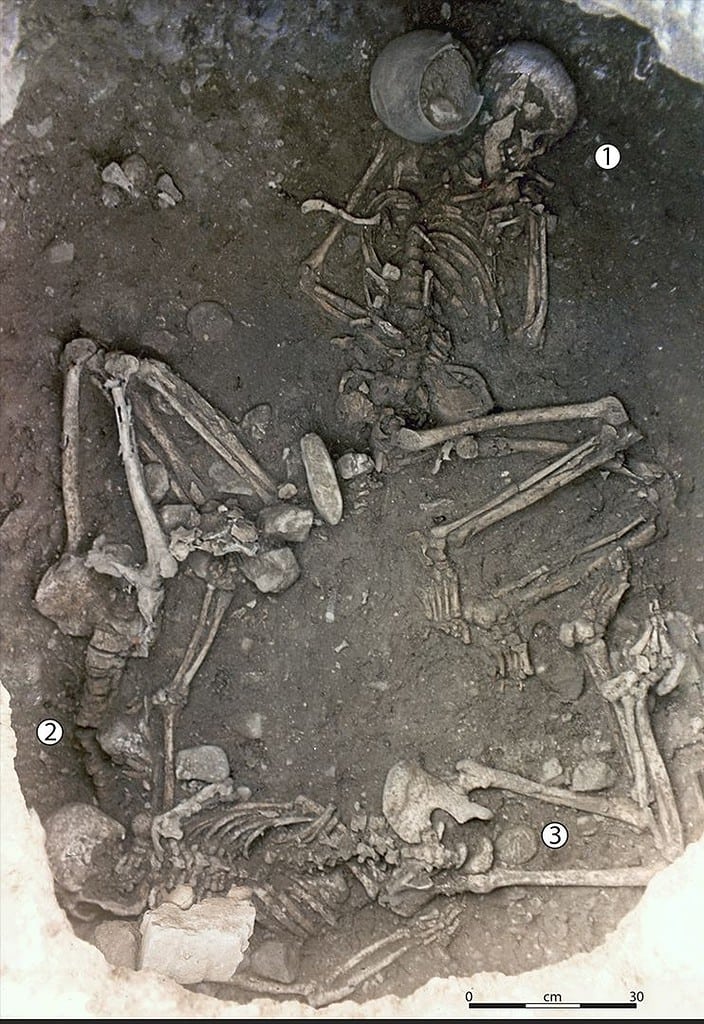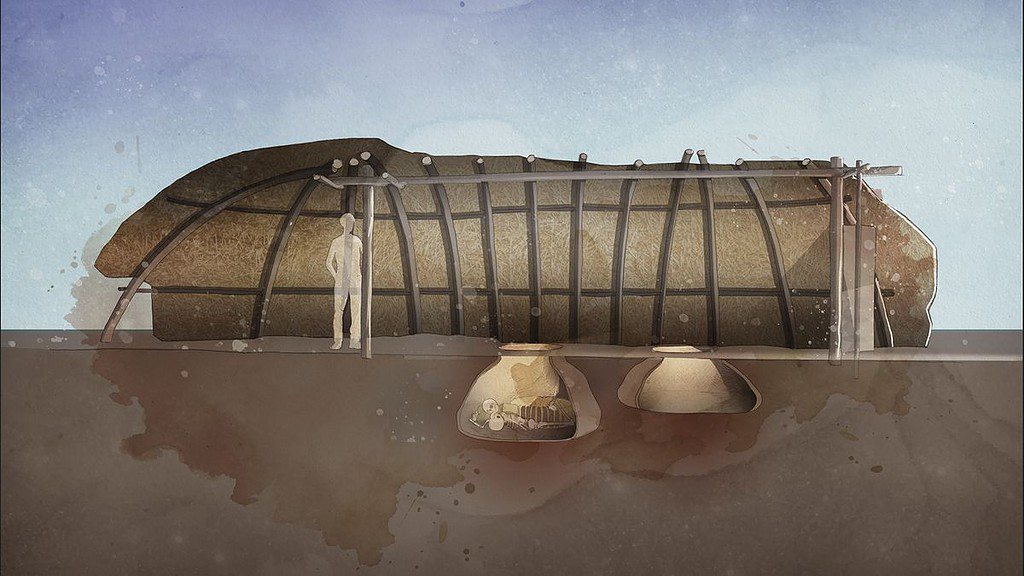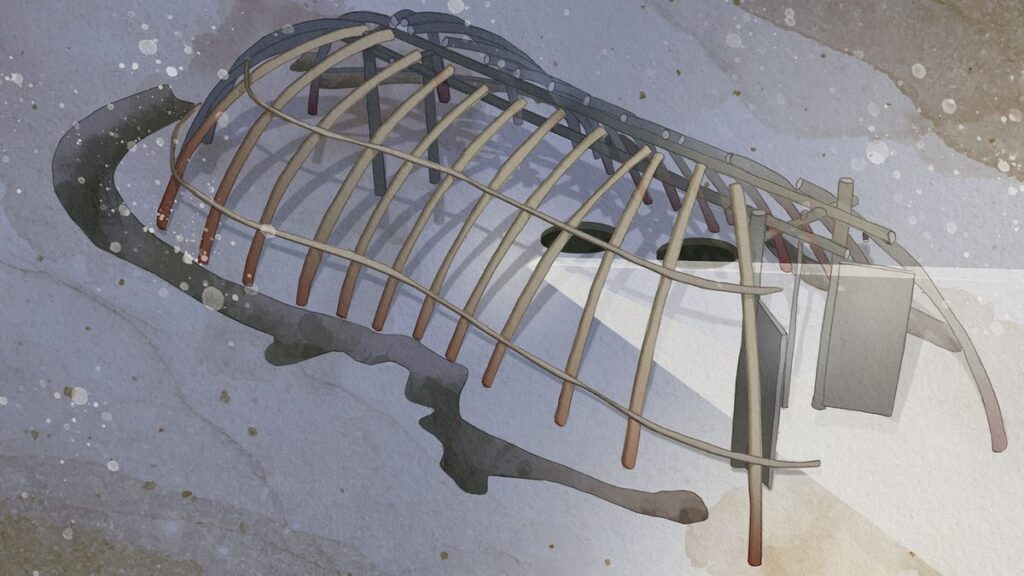
More than 40 years ago, archeologists discovered an unusual 5,500-year-old tomb at Saint-Paul-Trois-Châteaux near Avignon, in southern France. The tomb contained the remains of three Neolithic women, two of whom were in an unusual mortuary stance. A new study has revisited these remains and, in the process, has uncovered a ghastly secret hidden for millennia.
The two women did not die of natural causes. They were likely killed as a sacrificial offering meant to gain favor with supernatural forces. Ritualistic sacrifices have always been a thing in the ancient world, but this time it’s really strange.
A disturbing practice
Researchers conclude that the victims died due to a brutal method of murder known as “incaprettamento” — where the victim’s neck is tied to their legs behind their backs. When the victim struggles, they are effectively strangling themselves. You can never rest your legs otherwise you die.
The same method is used by the Sicilian Mob on enemies and traitors to make an example out of them. The term is derived from Italian, meaning “to tie up” or “to rope.”
And the Stone Age sacrifice at Saint-Paul-Trois-Châteaux wasn’t an isolated event. Moving up and down the breadcrumb trail, archaeologists have found over twenty other suspected incaprettamento victims. These were scattered across more than a dozen sites in Europe dating to between 5400 and 3500 BCE. It’s a pattern of violence that has, so far, escaped the prying eyes of historians.

Forensic anthropologist Eric Crubézy was among the first researchers who saw the remains of the three women in France’s Rhône Valley. In the intervening years, he would look back at this eerie and baffling tableau and wonder what happened. It wasn’t until decades later that he began to see things clearly in his mind’s eye.
Unveiling a dark mystery
The revelation came upon him serendipitously while reading a description of the Italian Mafia’s incaprettamento. The strategic placement of a victim to induce self-strangulation looked extremely similar to the conditions under which two of the Saint-Paul-Trois-Châteaux women were found.
In a new study, Crubézy finally picked up where he left off and enlisted the help of other specialists from the Paris City University.
Saint-Paul-Trois-Châteaux was not just a burial ground. It was a ceremonial site attracting large gatherings, as evidenced by animal bones and artifacts sourced from distant locations. This site was particularly tied to agriculture. For instance, the tomb of the three women looks like a silo where grain was stored. A wooden structure was built over this tomb (or grain pit) that was aligned with the sun at the solstices, one of the most important astronomical events across most cultures throughout human history.

Several broken stones that looked like they were used for grinding grain were found near the tomb. In fact, the two sacrificial victims look like they were pinned down by some of these grinding wheels. Despite their bindings, Crubézy says that the victims were probably alive when they were buried. However, there is no way of telling whether the victims were alive or conscious when their final resting place was sealed, so this bit is speculative.
A different kind of human sacrifice

All of these clues point toward a ritual geared toward boosting agriculture and fertility. The third woman was interred normally for a Neolithic burial, on her side. She was older and was buried at the center of the tomb, between the two sacrificial victims. The researchers believe this person died of natural causes and the two younger women died when the third was buried.
To make their case, the researchers investigated other similar tombs from across Europe. They eventually found 20 incaprettamento-like victims across 14 Neolithic sites dated to between 5400 and 3500 BCE. A later Mesolithic cave painting found at the Addaura Cave in Sicily depicts a group of men arranged in a circle around two very controversial figures with a strange position in their arms and legs.
A 2019 study suggests that the figures shown in the cave art “are engaged in a dance whose purpose is most probably linked to the ceremonial sphere”. However, Crubézy and colleagues believe the two figures are bound in incaprettamento.
“We can say this special torture was a common practice in all these sites,” Crubézy told Science.
History remains shrouded
Unfortunately, there are still many unknowns and mysteries. There are no bindings that have been preserved and bones alone can’t reveal whether the victims were strangled or tortured in some way. The researchers acknowledge this in their study, but also point to the wealth of evidence across different sites separated by centuries and hundreds of kilometers. This leads them to believe that the incaprettamento-like burials might have been part of a wider cultural practice.
As Europe transitioned into the era of megalithic monuments, these violent rituals faded into obscurity, marking the end of an era. This shift reflects broader social and economic transformations within Neolithic societies, moving from ritual human sacrifices to monumental stone constructions as expressions of communal identity and belief.
The findings appeared in the journal Science Advances.






